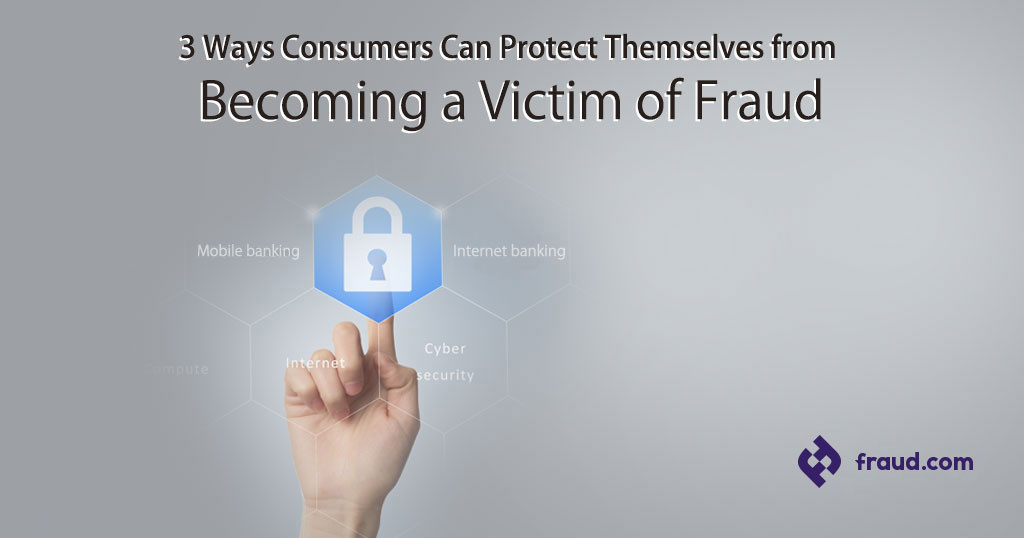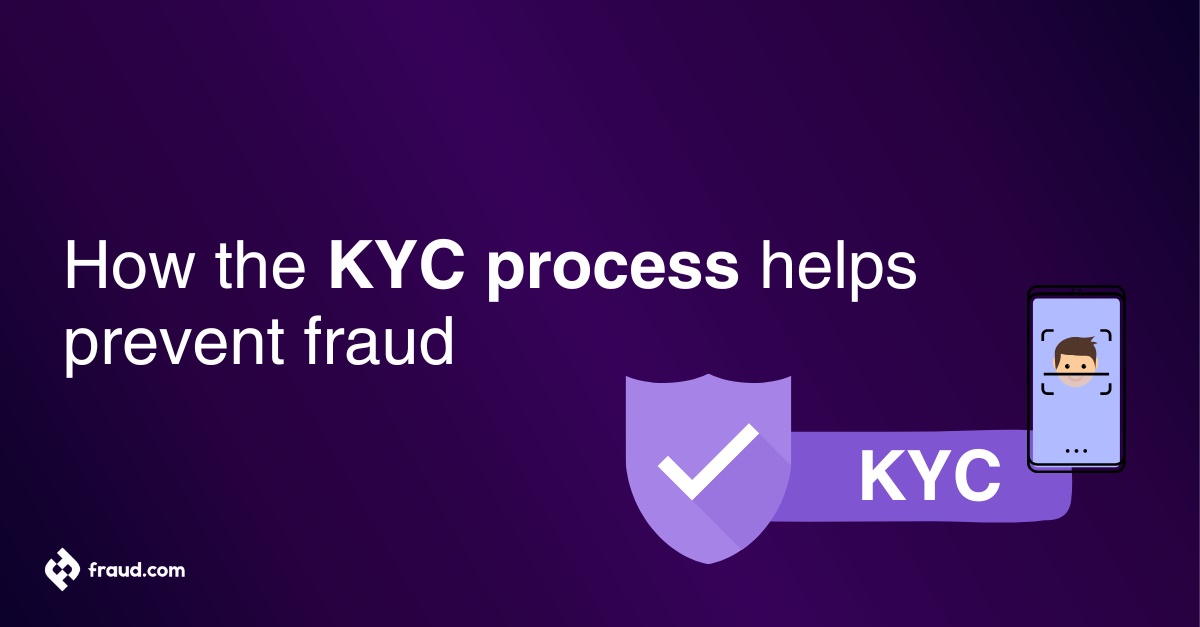As more consumers are turning to digital methods of managing their finances, there is also a greater risk of becoming a victim of fraud. In 2018 there were three million identity theft and fraud reports received in the USA, of this 46% were fraud-related and 25% of these cases reported financial losses. The Federal Trade Commission (FTC) has reported that consumers lost a total of $905 million to fraud in 2017 ($63 million more than in 2016), additionally, fraud complaints have jumped from 1.17 million to 1.42. Furthermore, UK finance has reported a total loss of £844.8 million in 2018 to fraud in payment cards, remote banking, and cheques (16% more than in 2017). Additionally, in 2018 UK Finance members reported 84,624 incidents of authorised push payment scams with gross losses of £354.3 million. These symbolic figures indicate the substantial increase in fraud on an international scale.
Global consumers are widely exposed to the threat of becoming a victim of fraud, however, there are ways individuals can protect themselves and lower the risk of having their personal and financial data compromised. Cybercriminals are constantly creating new schemes and strategies to access consumers’ data and money. This article will offer five ways consumers can make sure their data is safe from digital predators who target millions of individuals daily and globally.
Table of Contents
ToggleAudit Your Account Activity
Smartphones have become a life necessity for millions worldwide. Whether it is buying music, paying credit cards, or transferring money to a friend, there are countless ways individuals can move around money by simply clicking or swiping on their phones. This can create a complex network of transactions which creates the perfect landscape for cybercriminals to set their traps. Daily transactions taking seconds due to faster payments and real-time payments may enable new avenues for fraudsters.
FICO claims that since the UK introduction of real-time payments in 2008, the UK has seen an increase in Authorised Pushed Payment (APP) Scams. Real-time payments make it easier and quicker for users to move money, including fraudsters, meaning that they need access to multiple bank accounts, making certain bank accounts frauds such as account takeover fraud, application fraud and the use of money mules, particularly attractive.
To avoid the risk of becoming a victim of fraud it is recommended that individuals frequently check their financial accounts for any transactions that are out of their normal spending behaviours or are just outright egregious. By simply auditing financial accounts consistently, consumers will lower the risk of fraudulent activities occurring without their knowledge. Another recommendation is for consumers to activate banking notifications for any unusual or suspicious activities which are outside the norm of their purchasing habits. This helps consumers react to fraudulent behaviour in real time by engaging the right parties to identify and address the threat to their account(s).
Manage Your Passwords Better
With many websites needing passwords to access account information, passwords can become somewhat of a headache to some when it comes to creating and storing these valuable codes which can unlock a treasure trove of data for fraudsters. Many consumers simply do not put much effort into creating strong passwords which would puzzle even the smartest of cyber criminals.
This year (a U.K. Newspaper) “The Sun” claims that fraudsters have effectively cracked 23 million passwords because consumers are using easy ones such as “123456”, they may also use names or phrases which are easily searchable online (e.g. mother’s maiden name, birthday, etc.). These passwords make consumers easy targets for criminals. Strong passwords that are hard to crack are a simple way to prevent fraud no matter the application being used. However, many people who have countless passwords will try and make it easy on themselves to remember but this also makes it easy for fraudsters to access such sensitive data.
A recent development in the password security arena is the use of password managers to create, store, and distribute passwords when needed. A password manager is a book of passwords which can be retrieved at any time from any device. However, this software does not simply store passwords it also creates strong, unique passwords on demand. These programs also come as browser add-ins which can prefill passwords for added convenience. A CISCO article suggests that users should use a complex and secure password that is not easily guessed words, instead Nonsensical words and phrases that substitute letters with digits and symbols, such as ”45Monk3y t1m3 fun!” are the most secure.
This technology takes the pain out of thinking up crazy new passwords while also providing users with an added level of protection to prevent access to personal online accounts. Although it is a convenient method for users it can also present a threat if a session isn’t blocked or logged out when leaving it unattended, therefore it is recommended that users log out if leaving the device unattended.
Learn to Recognize Scam and Spam Content Emails
Emails are a very effective form of communication and companies can also use them to inform consumers of new products and services. However, it can also be used to deliver unwanted malicious data that could cause significant harm. Unwanted malicious data include spam or junk email and email scams such as phishing. Spam email is unsolicited junk mail, including advertising such as gambling and dating sites and work-from-home schemes to get rich. Users can spot spam if they don’t know the sender, there are grammatical errors, offers which are too good to be true, has an urgent offer with a deadline, contains attachments and may be requesting to forward the email to other people.
On the other hand, email Scams are typically sent in the form of a spam email, however, not all spam emails contain scams. The main aim of a scam is to trick individuals into disclosing personal data which will lead to identity theft or fraud. Examples of email scams are emails offering emotional, physical or financial benefits. According to getsafeonline (2019) these emails can pose as trusted sources, for instance, banks or government bodies. They ask you to click on a link which then displays a website which looks as authentic as the real one, then you are asked to enter personal information.
Phishing is the most common type of email scam. The Federal Bureau of Investigations (FBI) reports that phishing business email compromises accounted for over $12 billion in losses and Webroot reported that around 1.5 million new phishing sites are created each month, in the USA alone. Furthermore, an estimated £10 billion is lost in the UK by scam victims. There is research that indicates that the success rate of attacks increase globally as Avanan’s research shows that phishing attacks increased globally by 65% between 2016 and 2017. These statistics show there is no end in sight when it comes to scams and spams heading to an individual’s inbox, messages, or even through the telephone. Below are a few quick ways you can spot a phish that you do not want to reel in:
▪ Before clicking a link in a suspicious email, whether you are on a mobile, desktop or laptop device make sure you check the actual source, if you don’t recognise the sender, block them and delete the email immediately
▪ Installing anti-phishing software to internet browsers will help identify and alert users if they have accessed a list of known phishing sites. This software can be an added defence just in case someone clicks on a link that appears legitimate
▪ Always make sure any website visited starts with an “https” URL. There should also be a small lock near the address bar and access to a site’s security certificate which will help users verify the site is safe to navigate
▪ Keep an eye out for misspellings, this is designed to fool spam filters ▪ Do not download or open attached files
▪ Do not pay for any invoices, make purchases or charity donations until you are certain it’s from a legitimate sources
These are just a few quick tips but there are many other ways to help decrease the risk of becoming a scam victim and potentially a fraud victim. In the future, these scams will only become more sophisticated meaning consumers need to be aware of what they are clicking on before it is too late.
Wrapping Up
Nobody wants to become a victim of fraud. It creates harm and unneeded stress for individuals whose data have been compromised. This article suggests a few easy ways consumers can stay safe and out of the grasp of cyber criminals. However, in the end, is it up to the individual to take cybersecurity into their own hands to protect the assets they have worked hard to earn. There many entities and websites which offer plenty of information on how to prevent scams and therefore fraud. With just a few steps we can all play an active role in the fight against fraudsters. Be better safe than sorry!
Protect your customer from fraud with fraud.com
Fraud.com provides three solutions: Udentify, aiReflex, and fcase, to help organisations protect their customers from fraud.
Udentify verifies a user’s identity before allowing access to private areas or apps using biometric authentication methods. Customers have control over the process to ensure authorised access.
aiReflex uses AI and machine learning to detect mobile banking fraud in real-time by monitoring device identification, location, and behaviour during transactions. Alerts are sent to the bank’s fraud team to take immediate action.
fcase automates fraud prevention and response by collecting and analysing data from multiple sources and internal systems. Its Fraud Orchestration capabilities allow real-time detection and quick response to fraudulent incidents. Various fraud prevention systems and tools, including AI and ML models, can be integrated to enhance detection and response accuracy.
Overall, Fraud.com’s solutions provide comprehensive protection against fraud by combining biometric authentication technology, AI-powered fraud detection, and an automated fraud prevention and response platform.









